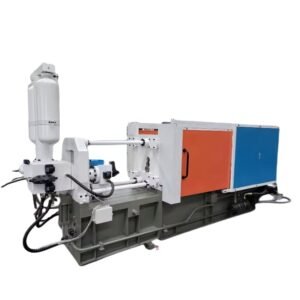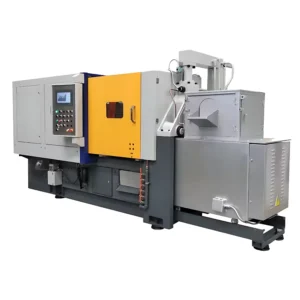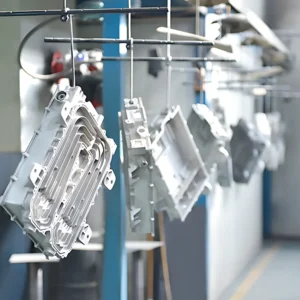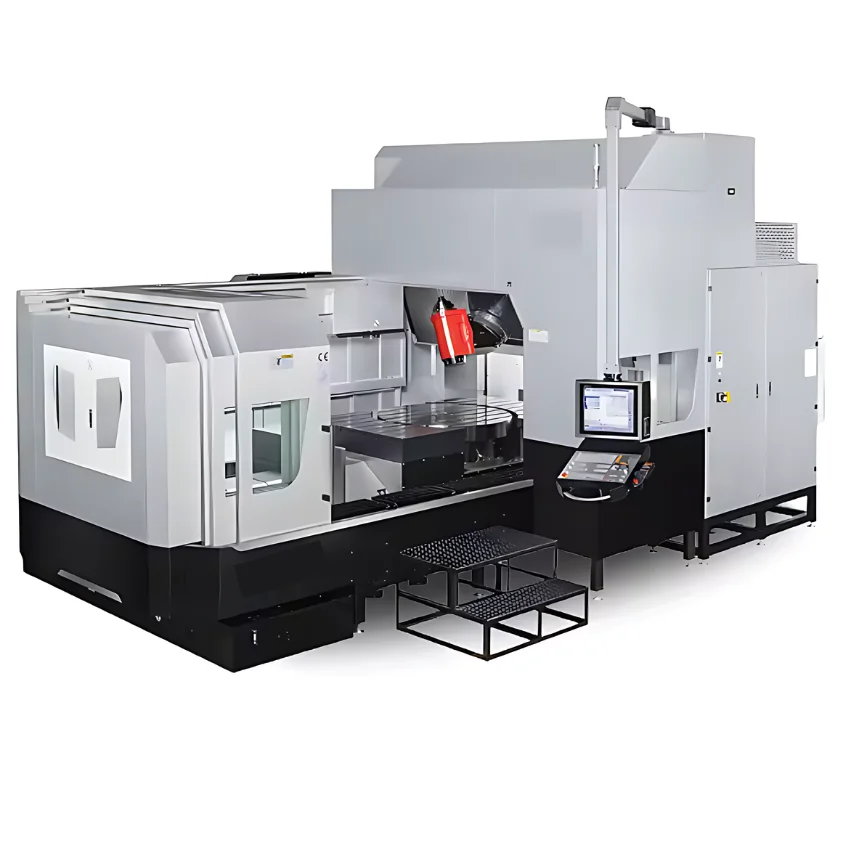In modern manufacturing, CNC machines are capable of running 5 axes simultaneously for efficient and accurate production. Read this article to learn what the 5 axes on a CNC machine are and their machining advantages and applications.
Read More: What do CNC machines do?
What are the 5 Axes in CNC Machining?
In a 5-axis CNC machine, an axis is a designated character used to determine the direction of movement of a cutting tool.
The following 5 points summarize the direction of motion, advantages, and maintenance of each axis.
X-axis
- Movement Direction: horizontal left and right movement.
- Advantages: The X-axis can realize a wide range of horizontal movement and is suitable for processing long workpieces.
- Maintenance Method: Regularly check the wear of the guide rails and sliders to ensure that the lubrication system is working properly to maintain movement accuracy.
Y-axis
- Movement Direction: forward and backward movement in the horizontal direction.
- Advantages: The Y-axis and the X-axis cooperate to realize two-dimensional plane processing, which expands the processing plane and increases the flexibility of processing.
- Maintenance Method: Similar to the X-axis, the guide rail needs to be kept clean and lubricated, and calibrated regularly to avoid deviation.
Z-axis
- Movement Direction: vertical movement up and down.
- Advantages: Mainly controls the depth of contact between the tool and the workpiece, which has great advantages in drilling and milling cutting.
- Maintenance Method: Check the stability and accuracy of vertical moving parts to avoid errors caused by mechanical looseness.
A-axis
- Movement Direction: Rotate around the X-axis.
- Advantages: The rotation of the A-axis allows the tool to contact the workpiece from different angles, suitable for complex curved surfaces and polyhedron processing.
- Maintenance Method: It is necessary to regularly check the accuracy of the rotation center and reduce mechanical clearance.
B-axis (or C-axis)
- Movement Direction: rotation around the Y-axis (or Z-axis).
- Advantages: Similar to the A-axis, the addition of the B-axis or C-axis provides additional rotational freedom and enables five-sided machining.
- Maintenance Method: The maintenance of rotating shafts is more complicated than that of linear shafts, and special attention needs to be paid to the wear and lubrication of bearings and gears.
5-axis CNC machine tools have been increasingly used in high-precision industrial fields, such as aerospace, automotive, and other industries. For more about machine tools click here.
How Does a 5-Axis CNC Machine Work?
In 5-axis CNC machining, by combining three linear axes, X, Y, and Z, and three rotary axes, A, B, or C, the machine can accurately cut the part into shapes pre-determined by CAD (Computer Aided Design) files.
Machining instructions are transmitted from the CAD system to the CNC machining center in the form of G-codes, ensuring that the tool precisely machines the part as designed.
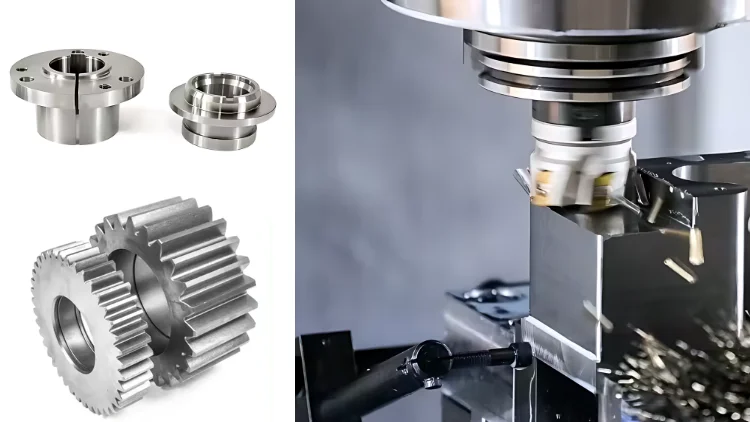
Benefits Of 5-Axis CNC Machining
The main advantages of 5-axis CNC machining are as follows.
Complex Geometries
Five-axis CNCs are capable of machining extremely complex designs, such as intricate surfaces and internal structures. Improving the machining accuracy and surface quality of the parts is also not an issue.
It can make full use of the cutting tool to realize precision machining, reduce the loss and damage of the tool in the cutting process, and extend the service life of the tool. At the same time, due to the reduction of the number of workpiece clamping, also reduces the error caused by repositioning, to ensure the consistency of the size of the workpiece and the overall accuracy.
Higher Accuracy
Compared with traditional three-axis machine tool processing, five-axis machine tool processing can achieve five different-axis direction movements. Through five-axis linkage cutting, extremely fine geometries and complex shapes can be processed seamlessly, reducing manufacturing errors and reducing material waste.
In terms of application fields, five-axis CNC machining is widely used in industries that require extremely high precision and complex geometric structures. For example, in the aerospace, automotive, medical device, and mold manufacturing industries.
Efficiency
The biggest advantage of the five-axis linkage CNC machine tool is that it can greatly shorten the processing cycle of the machine tool and shorten the installation cycle of the machine tool. Compared with three-axis machine tools, five-axis machine tools can complete more complex processing tasks with one clamping, while three-axis machine tools often require multiple clamping and debugging. It not only saves the time and effort required to replace workpieces but also reduces errors caused by resetting.
Premium Surface Finish
The tool can be positioned at an optimum angle to the surface of the workpiece, which improves surface finish and sometimes eliminates the need for finishing after machining.
Drawbacks Of 5-Axis CNC Machining
Despite its advantages, there are several drawbacks to 5-axis CNC machining:
Higher Costs
These machines are significantly more expensive than their 3-axis counterparts in terms of initial investment, maintenance, and operational costs.
Complexity in Programming
Programming for 5-axis machining is complex and requires advanced knowledge and experience, which can add to training costs.
Increased Maintenance
CNC machine tools have a lot of moving parts and complex components and therefore require more time and labor to maintain.
Difference Between 3-axis and 5-axis Machining
Three-axis CNC machines operate primarily along three linear axes (X, Y and Z) and can machine parts with relatively simple geometries.
Five-axis machines add two rotary axes. This difference allows 5-axis machines to machine parts with more complex geometries and tighter tolerances.
In addition, five-axis machining reduces the need for multiple setups, whereas three-axis machining requires multiple setups and complex processes.
Not only does 5-axis machining increase productivity, but it also reduces the amount of error associated with adjusting parts.
Here you can view how CNC machining tools should be selected.
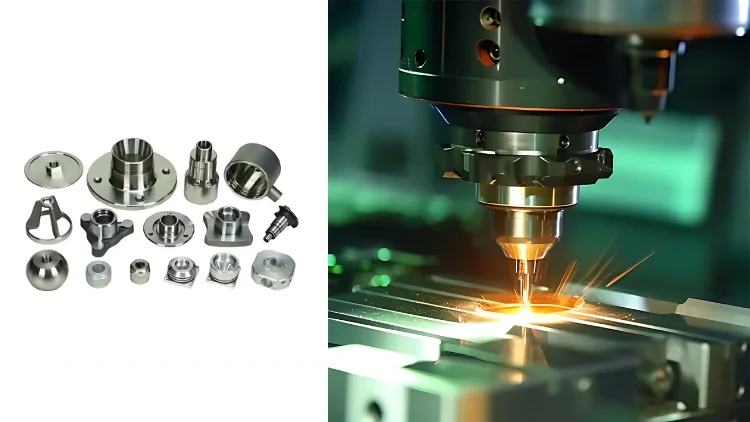
Summarize
Five-axis CNC machines are capable of producing complex parts with high precision and excellent surface finish. Although five-axis CNC machines have disadvantages such as high initial investment and complex programming, they have advantages that can make them valuable in several applications that are important for precision, complex shapes, and other areas.
If you are looking for CNC machining services, you can contact us today for a quote on your latest project.

